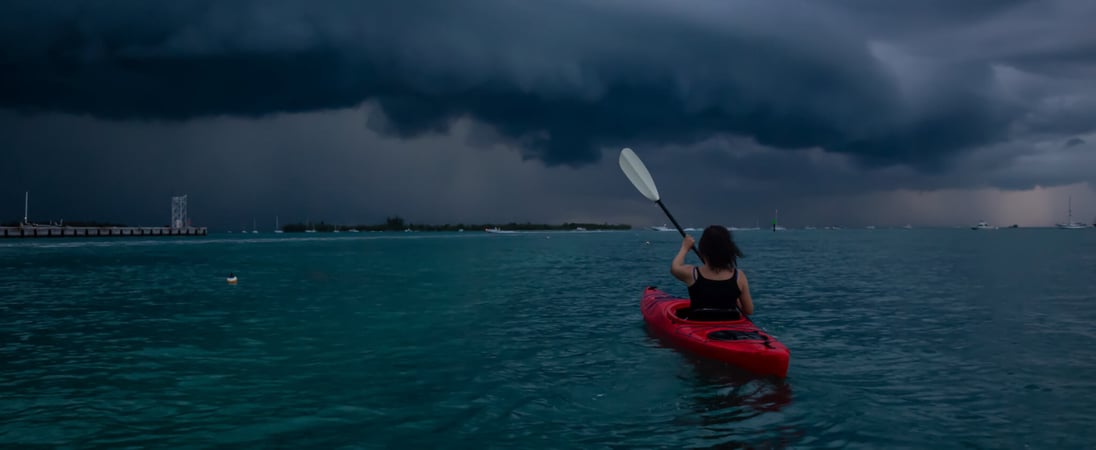
Disaster Day
No one wants to experience a disaster! But those who are ready and prepared will fare better if it does happen. Being proactive is what the International Day for Disaster Reduction is all about!
How to Celebrate Disaster Day
An important day for everyone all over the world to take part in, International Day for Disaster Reduction offers plenty of opportunities for individuals and communities to band together and get prepared. Consider implementing some of these ideas in observation of the day:
Create a Personal Disaster Kit
Though most people don’t consider building a bunker in case of a nuclear fallout, that doesn’t mean people don’t need to be ready in case an emergency occurs. Each family can create a small disaster preparedness kit that is kept in a safe, accessible place in case of difficulty.
This kit can include a flashlight with extra batteries as well as candles and matches in case there is no electricity.
Bottled water, canned goods, toilet paper, a first aid kit, garbage bags, cell phone charger, some basic tools, face masks, prescription medication and other items can go into an emergency disaster kit that can be ready in case the family needs it.
Check out the suggestions at Ready.gov for more information.
Take Part in Disaster Reduction
One excellent way to go about being prepared for disaster is to contact the local community leaders to find out which disasters are of the highest risk.
Obviously, while some places are more likely to be at risk for tornadoes, others might be at risk for hurricanes while still others might experience earthquakes, wildfires or even landslides.
Take this opportunity to get educated about the potential disasters in the local area and then raise awareness and advocate for the community to be prepared.
Help with classroom education, teach community members about seasons that are more risky or raise donations to help provide families with disaster kits.
History of International Day for Disaster Reduction
With its efforts towards engaging in thinking that includes disaster preparedness and pre-disaster action instead of simply relying on post-disaster responses, the United Nations Educational, Scientific and Cultural Organization founded the International Day for Disaster Reduction in 1989.
It started as a day to promote a global culture of awareness related to reduction of disasters.
The purpose of the day has continued to be related to celebrating those places and people around the world are able to reduce their exposure to disasters while raising awareness about the importance of understanding risks and working toward minimizing them.
This kind of preparedness can happen on a local, national or international level through individuals, communities and governments alike.
Preparation for this day might mean that small communities install disaster alarm warnings to help everyone know when a storm or some other problem is coming.
Or perhaps local governments will create and/or review plans for how their emergency services will respond in certain situations. International Day for Disaster Reduction is the time to raise awareness and take action related to these concerns and issues!
Disaster Day FAQs
What inspired Japan’s Disaster Prevention Day on September 1st?
Japan observes Disaster Prevention Day annually on September 1st to commemorate the 1923 Great Kantō earthquake.
This catastrophic event led to significant loss of life and property. The day emphasizes the importance of disaster preparedness, with nationwide drills and educational activities to equip citizens for future emergencies.
How did the 1923 Great Kantō earthquake influence urban planning in Tokyo?
The devastation from the 1923 Great Kantō earthquake prompted Tokyo to implement modern urban planning measures.
Initiatives included constructing wider roads, creating public parks as evacuation spots, and enforcing stricter building codes to enhance resilience against future disasters.
What is the significance of World Tsunami Awareness Day on November 5th?
World Tsunami Awareness Day, observed on November 5th, was established by the United Nations to promote global awareness of tsunamis.
The date honors a Japanese legend where a farmer saved his village from a tsunami by setting fire to his rice sheaves, teaching the importance of early warning and evacuation.
How did Cyclone Tracy reshape building standards in Darwin, Australia?
Cyclone Tracy, which struck Darwin on December 25, 1974, led to extensive destruction.
In its aftermath, building codes were overhauled, emphasizing structures capable of withstanding cyclonic forces.
This included transitioning from nailing to screwing down roofs, significantly enhancing their durability against future cyclones.
What was the impact of the Tasman Bridge disaster on Hobart’s infrastructure?
On January 5, 1975, the bulk ore carrier Lake Illawarra collided with Tasmania’s Tasman Bridge, causing a section to collapse.
This event divided Hobart, disrupting transportation and highlighting the need for alternative routes and robust infrastructure planning to prevent similar incidents.
How did the 1923 Great Kantō earthquake affect naval architecture?
The 1923 Great Kantō earthquake caused significant damage to naval vessels under construction, such as the battlecruiser Amagi.
The destruction led to changes in naval architecture and shipbuilding practices, emphasizing the need for earthquake-resistant designs in maritime construction.
What role does the Global Alliance for Disaster Risk Reduction and Resilience in the Education Sector (GADRRRES) play in disaster preparedness?
GADRRRES collaborates with countries to enhance disaster risk reduction through education.
Their initiatives focus on improving disaster education, developing school disaster management plans, and ensuring the safety of educational infrastructures, thereby fostering a culture of preparedness among youth.
How did the 1923 Great Kantō earthquake influence global humanitarian efforts?
The international response to the 1923 Great Kantō earthquake marked a significant moment in global humanitarianism.
Nations worldwide provided aid, leading to the development of more coordinated international disaster relief efforts and setting precedents for future global collaborations in times of crisis.
What is the purpose of the International Day for Disaster Risk Reduction observed on October 13th?
Established by the United Nations in 1989, the International Day for Disaster Risk Reduction aims to promote a global culture of disaster awareness and preparedness.
It celebrates efforts to reduce exposure to disasters and emphasizes the importance of proactive risk management strategies.
How did the 1923 Great Kantō earthquake influence Japanese culture and society?
The aftermath of the 1923 Great Kantō earthquake led to a period of reflection in Japan, with many viewing the disaster as a divine admonition.
This perspective fostered a culture focused on moral integrity, national renovation, and militarism, influencing Japan’s societal trajectory in the interwar period.
Also on ...
View all holidaysNational Train Your Brain Day
Do a crossword, study a foreign language, or try your hand at some logic puzzles to keep your brain sharp and improve your mind.
National No Bra Day
Free yourself from your constraints and go braless to help raise awareness about breast cancer, a disease with hundreds of thousands of new cases each year.
We think you may also like...
Don’t Fry Day
Be aware of the dangers of sun exposure and try hosting an indoor picnic or movie marathon on the Council for Skin Cancer Prevention’s No Fry Day.
Road Safety Week
Staying alert, following traffic laws, and avoiding distractions while driving can keep you and others safe on the road.








